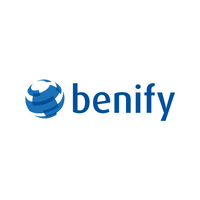How is technology supporting employee motivation and recognition?

Although most companies focus on employee engagement, a Forbes article The Relationship Between Employee Motivation, Engagement And Revenue written by Greg Kihlstrom suggests that, “engagement is really the middle of the story because everything starts with motivation, which leads to the desired behaviour”.
So, how can employers motivate their employees?
Motivation and Maslow's hierarchy of needs
In the 1940s, American psychologist Abraham Maslow created a theory on motivation based on a hierarchy of basic needs. The hierarchy is often shown as a pyramid where the individual needs to fulfil the lower levels before moving to the next level. Maslow's hierarchy of needs postulates that every individual has the following needs in sequential order: physiological needs; safety needs; need for belonging and love; need for esteem; and need for self-actualisation.
Each of these needs can be applied to our work. At the fundamental level, Maslow's theory can help explain why salary and benefits, such as paid vacation and healthcare, can be motivational as these help us support our basic human needs such as food, clothing and shelter.
As we work our way up the pyramid, we arrive at the "need for belonging and love”, which is when recognition becomes important. When an employee's work is recognised, and their needs are supported, they are likely to be more motivated and engaged in their work.
Work-life balance and flexibility
When it comes to our working needs, one of the most important is, in fact, work-life balance. As psychologist Leslie Sachs writes on Maslow's theory: "Autonomy is one of the most cherished factors in job satisfaction, and many employees are highly motivated to demonstrate their abilities in exchange for flexible work arrangements that carry with them significant autonomy."
Indeed, our recent Benefits and Engagement Report of 5,000 employees found that flexible working hours and the ability to work from home is what UK employees said they want more than anything else. In fact, when we asked employees which employee benefit would make them consider changing employers if their offering was better than their current employer's offer, 42% of participants in the UK said flexibility.
Using a flexible benefits model together with an employee benefits platform, employees can enrol in benefits that suit their needs. Take Adecco in the Netherlands for example, who offer their employees a so-called 13th-month benefit. Employees can decide how they wish to use this 13th-month bonus payment, be it extra vacation days, profit-sharing, or paid out in part or paid out in full.
Support the needs of your employees and, in turn, you’ll have more motivated employees.
Instant gratification through technology
Countless studies over the years have made the connection between motivation and reward/gratification, with the idea being that humans are motivated to carry out a specific task to receive a reward upon completion.
Today, in the fast-paced, digitalised world that we live in, and with technology playing a central role in our lives, we've come to expect instant gratification when it comes to rewards. Thanks to HR technology, recognising effort and rewarding employees has never been easier.
Recognition in and of itself is also a strong motivator; one of the most effective ways of increasing both engagement and motivation is through recognition and praise. Research conducted by Harvard Business School found that study participants who read positive statements about their past actions were more creative in their approach, better at problem-solving and less stressed.
Recognition through flexible rewarding
When recognising an employee's efforts, it's essential to reward them in a way that is meaningful to the individual. One idea is to allow employees to choose their own reward through their benefits platform. For example, the employer can decide a gift amount and then allow employees to select and order from a range of gifts up to the decided value from inside their platform.
Today, flexible rewarding is essential. Our Benefits and Engagement Report revealed that 66% of UK employees say they would find it helpful if they could adjust their benefits package according to their personal needs.
Want to see what rewards today’s employees want? We surveyed more than 5,000 employees throughout Europe to find out what benefits are most important, what benefits they would consider changing employers for, and what effect HR tech platforms have on benefits appreciation and the overall employee experience. Download The Benefits and Engagement Report: A European employer’s guide to employee experience of the 2020s.
This article is provided by Benify.
Supplied by REBA Associate Member, Benify
Benify offers the market's leading global benefits and total reward platform.







